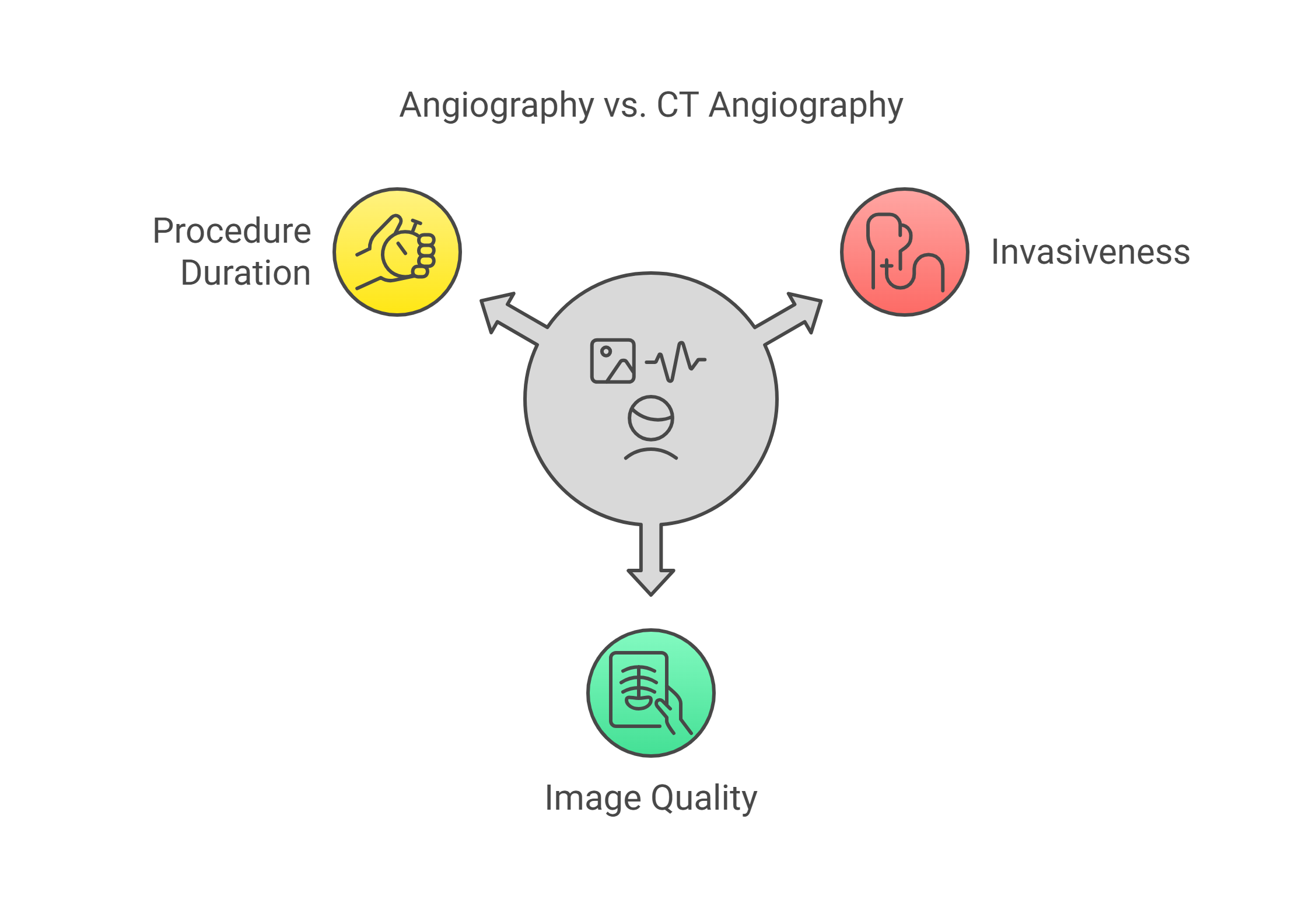
Understanding Angiography: A Vital Diagnostic Tool
Angiography is a key medical procedure that provides insights into the state of your vascular system. By leveraging X-ray technology, healthcare professionals can observe blood vessels that, under normal circumstances, remain invisible. This exploration starts with the strategic placement of a catheter, often inserted through the groin or arm, which allows clinicians to introduce a contrast dye into the bloodstream. The dye is crucial, as it makes the veins and arteries visible during X-ray imaging.
Doctors recommend angiography for various reasons—primarily to identify blockages in blood vessels that may lead to life-threatening events like heart attacks and strokes. Besides detecting potential obstructions, the procedure is instrumental in evaluating blood flow in major organs, which informs subsequent treatment plans.
CT Angiography: A Modern Alternative
CT Angiography (CTA) offers a different approach, utilizing advanced computed tomography to render detailed images of blood vessels. This method is less invasive compared to traditional angiography as it involves a less cumbersome set-up and offers faster results. CTA is particularly useful in detecting anatomical features and evaluating vascular diseases without needing to introduce contrast dye through a catheter.
This examination is recommended for patients who may need a rapid assessment of vascular issues, like those presenting symptoms of cardiovascular diseases. While both methods serve similar diagnostic goals, the way they achieve those outcomes has distinct implications for patient comfort and outcome precision.
Key Differences Between Angiography and CT Angiography
While both angiography and CT Angiography test the integrity of blood vessels, they do so through different means:
Invasiveness: Angiography is more invasive due to catheter insertion, whereas CTA is non-invasive.
Image Quality: CT Angiography often produces more detailed images of blood vessels and surrounding tissues, beneficial in identifying hidden issues.
Procedure Duration: CT Angiography usually provides quicker results, making it preferred for emergency scenarios.

Why Choosing the Right Test Matters
Understanding the differences between these two types of imaging tests is crucial for patients seeking diagnosis or treatment. The choice between angiography and CT angiography can influence not just diagnosis, but also treatment outcomes. Consulting with healthcare providers about symptoms and potential risks can help better tailor medical approaches.
Emotional Impact of Diagnostic Procedures
Undergoing any medical examination can induce feelings of anxiety. Recognizing that both angiography and CT Angiography are vital procedures designed to enhance patient health can ease these emotions. Knowledge about what to expect during each test helps patients feel empowered and reassured, ultimately leading to better cooperation and satisfaction during the diagnostic process.
Patient-Centric Care and Decision Making
Healthcare is increasingly shifting towards patient-centric approaches, emphasizing the importance of shared decision-making. It’s vital for patients to discuss their concerns and preferences with their doctors. Understanding the specifics of angiography and CT Angiography not only helps in making informed decisions but also aligns medical practices with individual health goals.
Conclusion: Take Charge of Your Health
Choosing between angiography and CT Angiography is a significant decision that can impact your health trajectory. By understanding each option and engaging with medical professionals, you stand a better chance of receiving the most appropriate care for your individual needs. Don’t hesitate to ask questions and advocate for what feels right for your health journey.
 Add Row
Add Row  Add
Add 




 Add Row
Add Row  Add
Add 

Write A Comment